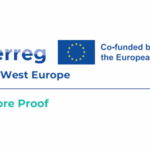 HiPoTeSis approved by Interreg Atlantic Area: strengthening floating offshore wind test infrastructure across Europe
HiPoTeSis approved by Interreg Atlantic Area: strengthening floating offshore wind test infrastructure across Europe

Lhyfe announces the return to port of Sealhyfe, the world’s first offshore hydrogen production pilot platform, after achieving all the objectives set at the time of its launch. On trial since September 2022, first at quay and then at sea at SEM-REV offshore hub test site, Sealhyfe has stored millions of data relating to the production of green hydrogen offshore and has enabled us to experiment offshore operating conditions. The lessons learned from this world first, made possible by the excellence of the teams, are already accelerating the large-scale offshore projects needed to decarbonise industry and mobility.
Lhyfe (EURONEXT: LHYFE), one of the world pioneers in the production of green and renewable hydrogen, announces that its pilot offshore hydrogen production platform, Sealhyfe, will make its return to the Quai des Frégates, in Saint-Nazaire, between this evening and tomorrow morning.
Inaugurated on September 23, 2022 in Saint-Nazaire, the first offshore hydrogen production pilot in the world, its mission was to demonstrate the technical feasibility of such a project, and to allow Lhyfe to have the necessary operational experience. to quickly scale up. The company had chosen to confront Sealhyfe with real conditions at sea for several months. These tests were therefore carried out on a floating platform, redesigned to stabilize the offshore production unit (WAVEGEM platform, developed by GEPS Techno) and connected to the hub of the sea test site SEM-REV of Centrale Nantes operated by the OPEN-C Foundation, to which a floating wind turbine is already connected (FLOATGEN, developed and operated by BW Ideol). For this, Lhyfe and its partners have designed, built and assembled all the equipment necessary for the production of offshore hydrogen, including the 1 MW electrolyser supplied by Plug. Sealhyfe thus has a production capacity of up to 400 kg / day.
As soon as it was launched in September 2022, the platform underwent a first phase of dockside experimentation (reference tests, optimization of equipment and the system, development of the necessary tools, etc.). She was then towed offshore, on May 19, on the SEM-REV site, for a second phase dedicated to the strict comparison of the first results observed at the dock, then to additional tests specific to offshore (reliable production of hydrogen at sea in an isolated environment, management of platform movement and environmental attacks, validation of software and hydrogen production algorithms green and renewable hydrogen, etc.). During this period at sea, the platform was subjected to a wide variety of weather situations and was able to carry out a set of tests allowing millions of data to be collected.
At the end of these many months of experimentation, the company has decided to bring the platform back to the dock, Lhyfe will now deepen the analysis of the data, the main lessons of which can probably be shared from January 2024. These results will benefit the all of Lhyfe's current and future sites, on land and at sea, and will be particularly exploited as part of stage 2 of its development of offshore hydrogen production: the HOPE project. (> to find out more: https://fr.lhyfe.com/ )


